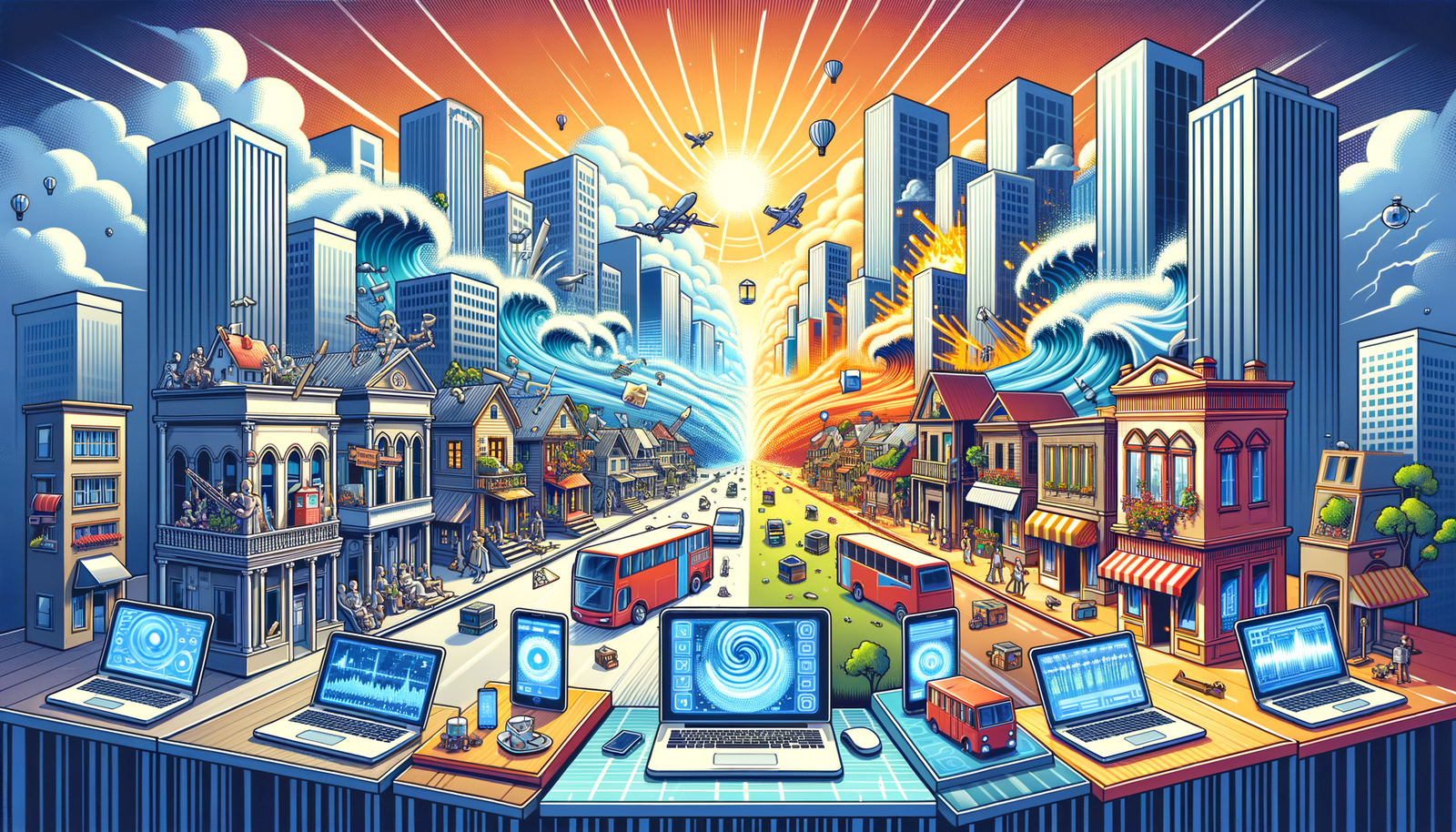Your Cart is Empty
Customer Testimonials
-
"Great customer service. The folks at Novedge were super helpful in navigating a somewhat complicated order including software upgrades and serial numbers in various stages of inactivity. They were friendly and helpful throughout the process.."
Ruben Ruckmark
"Quick & very helpful. We have been using Novedge for years and are very happy with their quick service when we need to make a purchase and excellent support resolving any issues."
Will Woodson
"Scott is the best. He reminds me about subscriptions dates, guides me in the correct direction for updates. He always responds promptly to me. He is literally the reason I continue to work with Novedge and will do so in the future."
Edward Mchugh
"Calvin Lok is “the man”. After my purchase of Sketchup 2021, he called me and provided step-by-step instructions to ease me through difficulties I was having with the setup of my new software."
Mike Borzage
Design Software History: From Sketchpad to Oculus: The Evolution of Design Software and Virtual Reality in Design Visualization
September 17, 2024 5 min read


The history of design software is a rich tapestry woven with technological advancements, pioneering individuals, and transformative innovations. This blog delves into the journey from traditional design visualization methods to the cutting-edge realm of Virtual Reality (VR) and its profound impact on design processes across various industries.
The Early Days of Design Visualization
Design visualization has always been a crucial aspect of the design process, serving as a bridge between the conceptual and the tangible. In the early days, traditional methods dominated the scene, including hand-drawn sketches, physical models, and 2D CAD drawings.
Introduction to Design Visualization
Traditional design visualization methods such as sketches and physical models were instrumental in conveying ideas. However, they had significant limitations, particularly in representing spatial and material properties accurately. The flat nature of 2D CAD drawings often fell short in providing a comprehensive view of complex designs, making it challenging for designers to fully grasp the intricacies of their creations.
Advent of 3D CAD
The transition from 2D to 3D CAD marked a significant milestone in the history of design software. This shift brought about a more immersive and detailed representation of designs, revolutionizing the design process. Ivan Sutherland's Sketchpad in the 1960s was one of the earliest attempts at computer-aided design, laying the groundwork for future advancements. Companies like Autodesk and Dassault Systèmes later played pivotal roles in popularizing 3D CAD software, making it an essential tool for designers worldwide.
First Steps into Virtual Reality (VR)
As technology progressed, the concept of Virtual Reality began to intrigue designers. Initial experiments with VR in design visualization were conducted by pioneering institutions like NASA. The Virtual Environment Workstation Project (VIEW) was one of the early endeavors to explore the potential of VR in creating immersive design experiences. These initial steps laid the foundation for the significant advancements that would follow in the realm of VR technology.
The Technological Evolution of VR in Design
The evolution of VR technology has been marked by continuous breakthroughs in both hardware and software, driving its integration into design processes and industries.
Breakthroughs in VR Technology
The development of sophisticated VR hardware such as the Oculus Rift and HTC Vive revolutionized the VR landscape. These devices offered high-resolution displays, precise motion tracking, and a more immersive experience, making VR more accessible and practical for design visualization. Advances in software and graphics rendering, exemplified by platforms like Unity and Unreal Engine, further enhanced the capabilities of VR, enabling designers to create realistic and interactive virtual environments.
Integration with Design Software
Leading CAD software companies like Autodesk, Siemens, and Dassault Systèmes quickly recognized the potential of VR and began integrating VR capabilities into their products. This integration allowed designers to seamlessly transition from traditional CAD environments to immersive virtual spaces, enhancing their ability to visualize and refine designs. Early adopters in industries such as automotive and aerospace leveraged VR to streamline their design processes, reducing the need for physical prototypes and accelerating development timelines.
Key Figures and Companies
The contributions of key individuals and companies have been instrumental in advancing VR technology. Visionaries like Jaron Lanier and Palmer Luckey played crucial roles in popularizing VR and pushing its boundaries. Lanier, often regarded as the father of VR, made significant contributions to the field through his work at VPL Research. Palmer Luckey's creation of the Oculus Rift brought VR into the mainstream, attracting the attention of tech giants like Google and Microsoft, who have since made substantial investments in VR research and development.
Impact on Design Processes and Industries
VR's impact on design processes and industries has been profound, offering numerous benefits and transforming the way designers approach visualization and collaboration.
Enhanced Visualization and Prototyping
One of the most significant advantages of VR in design is its ability to visualize complex designs and experience them at full scale. VR allows designers to immerse themselves in their creations, gaining a deeper understanding of spatial relationships and material properties. This enhanced visualization capability is particularly valuable in fields such as architecture, automotive, and product design, where precise and realistic representations are critical. By leveraging VR, designers can identify potential issues early in the design process, reducing the need for costly physical prototypes and iterations.
Collaborative Design and Remote Work
VR also facilitates remote collaboration and real-time feedback, enabling design teams to work together seamlessly regardless of their physical locations. Cloud-based design platforms like Onshape and Fusion 360 have integrated VR capabilities, allowing designers to share and review designs in a virtual environment. This level of collaboration enhances communication, fosters creativity, and accelerates decision-making, ultimately leading to more efficient and effective design processes.
Future Prospects and Challenges
As VR technology continues to evolve, it holds the potential to further revolutionize design visualization. However, several challenges and limitations must be addressed to realize its full potential.
Next-Generation VR Technologies
Emerging trends in VR technology, such as mixed reality, haptic feedback, and eye-tracking, promise to enhance the immersive experience even further. Mixed reality combines VR with augmented reality, enabling designers to overlay virtual elements onto the real world. Haptic feedback adds a tactile dimension to VR, allowing users to feel textures and forces. Eye-tracking technology enhances realism by providing more natural interactions and improving user comfort. These advancements have the potential to make VR an even more powerful tool for design visualization.
Challenges and Limitations
Despite its potential, VR faces several barriers to widespread adoption. The cost of VR hardware and software remains a significant concern, particularly for smaller design firms. Technical limitations, such as the need for high-performance computing and compatibility issues, can also hinder adoption. Additionally, user training and acclimatization to VR environments can be challenging, as VR-induced discomfort and accessibility concerns must be addressed to ensure a positive user experience.
Vision for the Future
Looking ahead, the role of VR in design visualization is expected to expand significantly. As hardware becomes more affordable and software continues to advance, VR is likely to become an integral part of design processes across various industries. The potential impact of VR extends beyond design visualization, influencing related fields such as construction, education, and entertainment. By providing immersive and interactive experiences, VR can revolutionize how these industries approach visualization, training, and engagement.
Conclusion
In conclusion, the history of design software is a testament to the relentless pursuit of innovation and the transformative power of technology. From the early days of traditional visualization methods to the cutting-edge realm of Virtual Reality, the journey has been marked by significant milestones and pioneering contributions. VR has emerged as a game-changer in design visualization, offering enhanced visualization, collaboration, and prototyping capabilities. As VR technology continues to evolve, it holds the promise of further revolutionizing design processes and impacting related fields. The future of design visualization is undoubtedly exciting, and the integration of VR will play a pivotal role in shaping it.
Also in Design News

Leveraging Predictive Design and Machine Learning for Future-Ready Solutions
November 26, 2024 10 min read
Read More
Design Software History: Advancements in Software for Disaster-Resilient Urban Planning: A Historical and Technological Perspective
November 26, 2024 7 min read
Read More
ZBrush Tip: Maximizing Sculpting Precision with ZBrush Morph Targets: Essential Tips and Techniques
November 25, 2024 2 min read
Read MoreSubscribe
Sign up to get the latest on sales, new releases and more …


